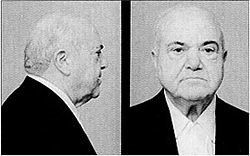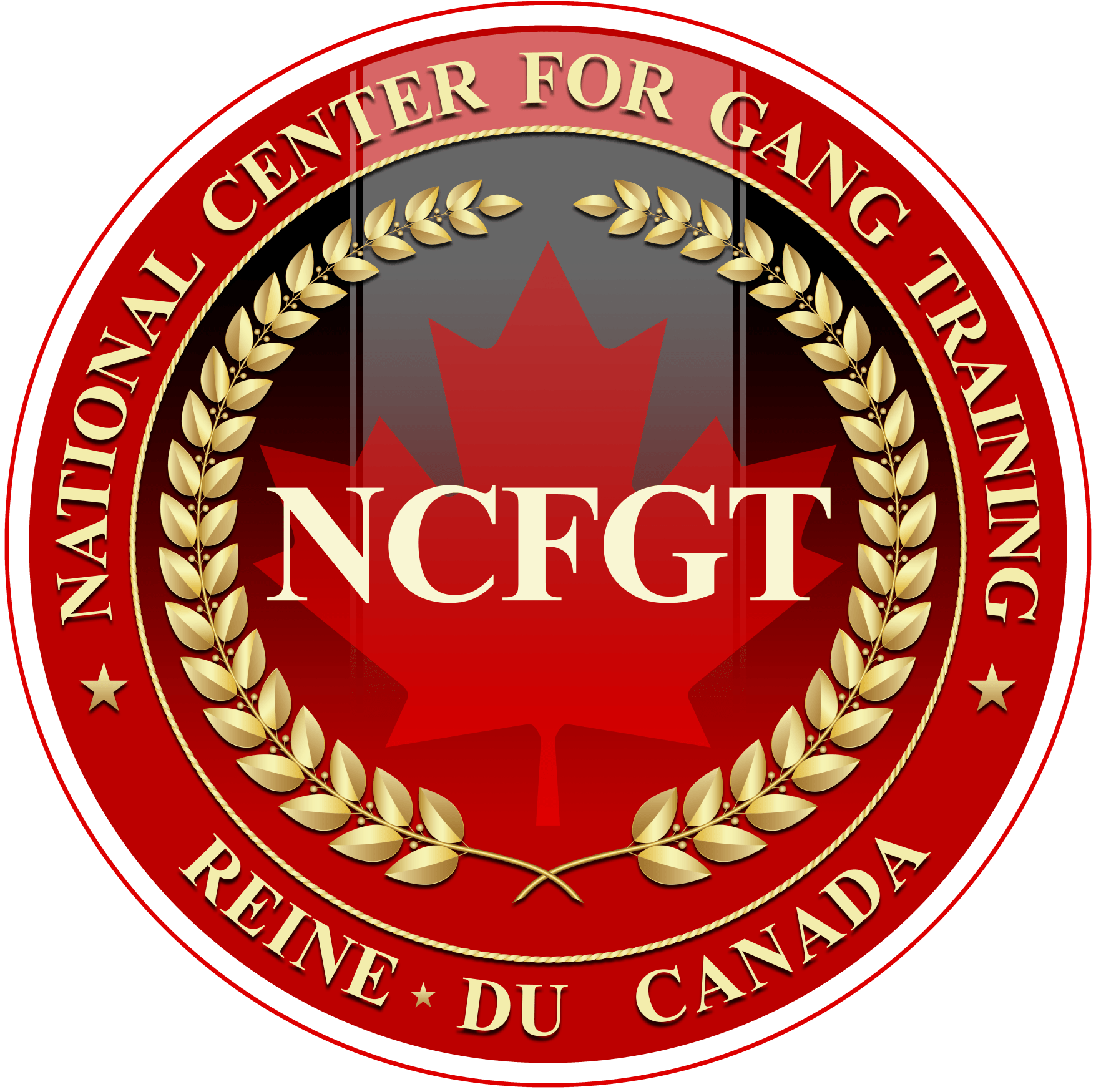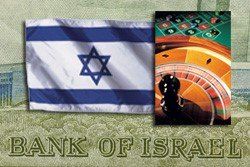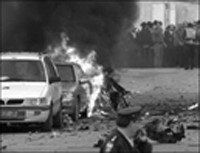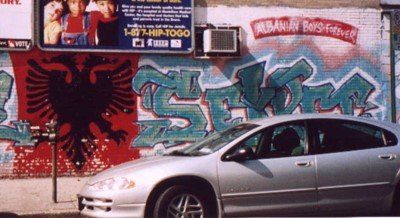Organized Crime in Israel pt.1
Organized Crime in Israel:
An Update (Part 1)
Public awareness was aroused again in the early 1990s with a new phenomenon that made news: the so-called Israeli Russian Mafia. This development can be tied to the collapse of the Soviet Union and the mass migration of Russian Jews (and some non-Jews) to Israel, which began in the late 1980s. The threat posed by Russian newcomers was first exposed by the Israeli press, which indulged in writing substantiated and non-substantiated horror stories committed by some of the Russians who settled in Israel. The two major criminal activities that became associated with the Russian Mafia were money laundering and the trafficking of women for the purpose of prostitution. In fact, the problem of the Russian Mafia in Israel even spilled overseas prompting a former U.S. State Department money laundering official to tell The Wall Street Journal that “by 1994, every Russian mob figure that the United States was tracking had an Israeli passport” (Karp, 2001). (It should be noted that because of Israel’s Law of Return, enacted after the Holocaust and the creation of the Jewish state, every Jewish immigrant became automatically eligible for Israeli citizenship and a passport. Not surprisingly, this policy has led to abuses by both Russian and other immigrants.) The INP also came to recognize the new threat in the 1990s. Thus, for instance, the chief of the police intelligence division, while testifying before a parliamentary committee in 1997, described the activities of the Russian Mafia in Israel as a “strategic threat” to the state and warned that the organization was attempting to get a foothold in Israeli business and banks and penetrate the country’s political system and media. At a police press conference, held at about the same time and attended by the police commissioner, it was revealed that the intelligence division had prepared a list of some 20 individuals (all immigrants from the former Soviet Union, some not even residing in Israel) whose activities were being monitored on suspicion that they were engaged in international organized crime activities.
Initial steps in the war on organized crime
Under American pressure, Israel began enacting legislation aimed at curbing organized crime activities such as money laundering and trafficking of women. American concern that Israeli links to international organized crime could threaten both countries’ anti-terrorist interests prompted the government to discount strong opposition from the country’s banking industry and push through the Knesset money laundering legislation. The law against money laundering was enacted in 2000 and went into effect in 2001. Among its various provisions, the law provides for a sentence of up to 10 years in prison for those convicted of money laundering. This law is implemented through the Israel Money Laundering Prohibition Authority.
Also in 2000, like many other countries, Israel established a Financial Intelligence Unit (FIU) to investigate money laundering and terror financing. The enactment by the American Congress of the Victims of Trafficking and Violence Prevention Act of 2000 and the consequent publications of the State Department’s annual report on trafficking, which classifies countries according to the severity of the sex problem, the efforts made to counter trafficking of women for the purpose of prostitution, as well as the assistance provided to the victims of such trafficking, put Israel in yet another bind. Among other things, the new act provided that countries that violated the act’s provisions would be subject to certain financial sanctions, including termination of non-humanitarian foreign aid. Facing such possible American sanctions, trafficking for the purpose of sexual exploitation was criminalized, making perpetrators of such crimes liable to as many as 16 years in prison (20 for trafficking a minor). And, in 2003, in an attempt to make it easier for the state to prosecute the heads of crime organizations, the Knesset enacted the Organized Crime law which, among other things, holds that heading a criminal organization, even without physically participating in its activities, in itself constitutes a criminal offense punishable by up to 10 years in prison.
Organized crime-linked activities
Despite the new legal constraints on money laundering and trafficking, these and other illegal activities continued to flourish throughout the country spawning ever more pervasive and deadly turf wars linked to organized crime. The major illegal activities the Israeli organized crime groups have been engaged in include:
- Operating casinos and other forms of gambling inside and outside Israel
- Prostitution and trafficking in women
- Money Laundering
- Protection and extortion rackets
- Loan sharking
- Drugs and arms dealing
- Fencing stolen goods
- Diamond smuggling
A wake-up call?
2003 Zeev Rosenstein car-bombing
On December 11, 2003, shortly after noon, a powerful bomb exploded on a busy street in Tel Aviv, killing three innocent bystanders and wounding another 20. That bombing was not the first or last bombing perpetrated by rival organized crime-linked gangsters in which innocent bystanders were killed or maimed. The target of the December 11 bombing was Zeev Rosenstein, dubbed by the local media at that time as Israel’s organized crime kingpin. The shock and outrage caused by this bombing ushered in a new era in Israel’s war on organized crime.
Immediately after the bombing, the government of Israel took the unusual step to consider a criminal justice-related issue (unusual because the government’s deliberations usually focus exclusively on political issues related to the conflict with the Palestinians or budgetary matters), ordering the Ministry of Public Safety to prepare a crime-fighting plan within 30 days. The cabinet also ordered that a task force be created with the Treasury Ministry to combat the gambling and sex industries in Israel. Consequently, the INP requested authorization to spend $100 million for hiring an additional 1,000 police officers, as well as advanced crime-fighting technology, and the creation of a specialized financial crime unit that would work closely with the already existing FIU in the Justice Ministry. The INP request was anchored in the realization that to properly fight organized crime it would need additional officers, as the great majority of officers were always engaged in anti-terrorism activities rather than crime fighting. As in the United States, it was also realized that the best weapon to fight organized crime is through financial pressure. (The case of Al Capone is often invoked in Israel to make that argument.) There was also talk about adopting new measures such as asset forfeiture and a witness protection plan. Still, in view of the severe financial crisis that was facing the country at that time, the government rejected the INP’s request for an infusion of crime-fighting resources as unrealistic and demanded that the police become more efficient.
Consequently, the INP appeared, at least on the surface, to heighten its fight against organized crime. The police commissioner declared that his force will undertake proactive measures against organized crime, and indeed the police mounted a major assault on a money laundering network, raided casinos and brothels, and launched hundreds of criminal investigations. In spite of these efforts, the basic structure of the organized crime network survived and continued to flourish, proving that, despite the December 11 bombing, the rhetoric of the INP continued to be louder than the substance of its operations.
New initiatives in the war against organized crime
While most Israelis continued to be more concerned with violence perpetrated by Palestinians on nationalistic grounds, the escalating violence and accompanying casualties of innocent bystanders related to the intra fighting among the organized crime families (see below), eroded public trust in the police with polls showing that mistrust of the police reached an all-time high (Jerusalem Post, 2008). Thus, for instance, one gangster was killed, and four bystanders—including a baby and a young boy—were wounded in a bombing in one of Israel’s larger cities. Shortly after, in two separate incidents, live grenades were tossed at two mayors’ houses. And at approximately the same time, two Israeli hit men were granted a plea bargain after murdering a former police officer who had become an executioner in Mexico for the Israeli mob. (The prosecution blamed the Mexican authorities for failing to provide evidence). Still, the fact that these two murderers received reduced sentences gave the appearance that the criminal justice system in Israel was in disarray and unable to cope with organized crime. Moreover, there were clear indications that at least one organized crime family had already infiltrated the police as far back as 1999.
As revealed in an interview with the Haaretz newspaper, Vered Zeiler, the head of an investigative commission that reviewed a six-year investigation of an alleged link between the police and organized crime, was quoted saying, “You are asking me whether crime has penetrated the government of Israel? I don’t know. But I do know that if the phenomenon I saw at this one narrow point has spread throughout the Israel Police – it’s Sicily” (Shavit & Yoaz, 2007). The so-called Zeiler Report led to a shakeup of the INP command and the appointment of a new police commissioner in May 2007. Not surprisingly, in one of his first public statements the new police commissioner tried to reassure the public of changes to come. As reported by the Jerusalem Post (2007), the INP was to embark on a new strategy, referred to officially as “the crime fighting fist,” which would be stronger and more effective in fighting organized crime. This was going to be the first of several new initiatives to be undertaken in 2008.
The new police National Crime Unit, Lahav 433
The new National Crime Unit was inaugurated on January 1, 2008. The unit, dubbed Lahav 433, consolidated five existing national bureaus into one. The units thus incorporated included: The National Unit for International Crime, The National Unit for Financial Investigations, The Etgar Vehicle Theft Prevention Unit, The National Unit for Fraud, and the “Gidonim” (elite undercover, counterterrorism) Unit. Lahav 433 has approximately 1,000 officers who are supposed to be equipped with cutting-edge intelligence and related technological tools in order to be able to produce the intelligence that is seen as the key to fighting organized crime. That mission was strengthened by a new law enacted by the Knesset, nicknamed “the big brother law,” which gives the police much greater freedom to collect information through electronic eavesdropping and other means.
Integrated anti-organized crime teams
As in the United States, law enforcement agencies in Israel have concluded that an integrated approach in which information is freely shared by several agencies is more efficient and indeed necessary to fighting crime. Consequently, it was decided that the phenomenon of organized crime could best be fought through the creation of integrated teams that include INP investigators, prosecutors, and tax and money laundering experts operating under the direction of Israel’s Attorney General.
The Witness Protection Program
Again adopting an American model, the idea of a witness protection program in Israel gained recent momentum. Traditionally, it has been the INP that was vested with the responsibility of protecting witnesses. However, already in 2004 a Justice Ministry committee recommended that the function of witness protection be shifted to the Justice Ministry or to a new agency that would be created for that purpose. The issue, however, became political with several agencies haggling over who should control the proposed witness protection program. Finally, the inter-agency dispute ended, with much time wasted, in a decision to create the program under the auspices of the Ministry of Public Security (the ministry that oversees the INP and the Israel Prison Service). Consequently, the Witness Protection Act was finally passed in late 2008 authorizing the creation of the Witness Protection Authority.
Improved Intelligence
Realizing that good intelligence is the key to success, the INP revolutionized its overall intelligence-gathering capabilities by establishing an intelligence center in March 2007. Trying to learn from Israel’s other security agencies that have excelled in collecting and analyzing intelligence data, the INP has since added innovative new tools and know-how to combat organized crime.
